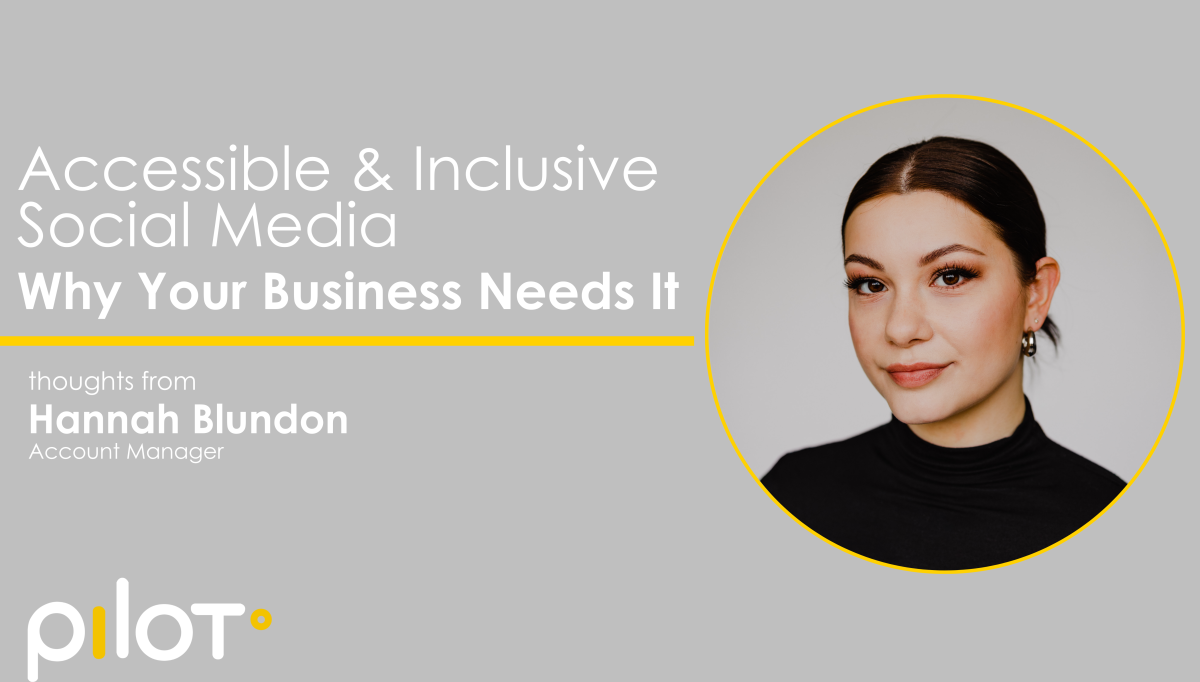Just like how buildings have accessibility features such as automatic doors and ramps, social media platforms have features to make your content accessible for those with disabilities.
Many people who are visually impaired or hard of hearing use social media and benefit from screen readers, text to speech programs, closed captions, and subtitles; to name a few.
Having accessible social media channels shows your business is committed to inclusivity and inclusive communications. Inclusive social media design is simply good practice. When universal design is considered in the development of your content, everyone is included.
So, I’ve convinced you to add accessible and inclusive social media to your social media strategy! You want your content to reach and be of value to as many people as possible. How can you implement this to your social media plan?
Use Alt Text and Image Descriptions
All social media platforms allow you to add alternative (alt) text to any photo post. When using screen readers, alt text will be read out and gives the user context to the photo posted. Image descriptions can provide further detail to the context of the post and are placed at the end of the caption. Both should be used. For example, the alt text can read: “a photo of a dog being walked by his owner” and the image description can explain where they are, what kind of dog, the weather, etc.
Use Subtitles and Closed Captions
Most social media platforms will automatically generate subtitles to your videos. Make sure that this is enabled and check them to make sure the information is correct. They aren’t always the best at picking up slang and accents! Closed captions are great to include on longer form content such as YouTube videos but also on other videos where there might be visuals but no one talking.
Avoid Flattened Copy
Flattened copy includes text overlays on images and infographics that have a lot of text. It can be incredibly difficult to read lots of text on a small image on a small screen. Screen readers can’t pick up text that is embedded on an image. The safest way to have text on a graphic would be to use very little amounts and add it to your image description.
Implement Title Case Hashtags #PilotCommunications
In title case for hashtags, the first letter of each word (regardless of word length) is capitalized. This allows for the screen readers to clearly decipher the different words. Otherwise, it will be read as one whole word. While this is great for accessibility, it also allows the hashtags to be read as intended and not be mistaken. Ex, #thebestinthebusiness vs #TheBestInTheBusiness
Make Your Captions Screen Reader Friendly
Screen readers will read text from left to right. Make sure to use proper punctuation and capitals to help screen readers decipher the beginning and ending of a sentence. Using fun characters and fonts from other sites makes the text illegible to screen readers. Emojis are designed to have their own unique description when read by screen readers. If you fill your captions with emojis, the context can get lost quickly so be strategic with their use.
Here are some questions you can ask yourself when developing content for your business:
- Can someone who is visually impaired or hard of hearing get value from our content?
- Would a screen reader be able to effectively decipher this post?
- Does our content use ableist or exclusionary language?
- Are the hashtags and emojis used appropriate for this post?
Other great resources:
- https://www.accessible-social.com
- https://www.perkins.org/resource/how-write-alt-text-and-image-descriptions-visually-impaired/
- https://sproutsocial.com/insights/social-media-accessibility/
- https://disabilityin.org/resource/creating-accessible-social-media-content/
Learn more about Pilot Communications digital and social media services.
